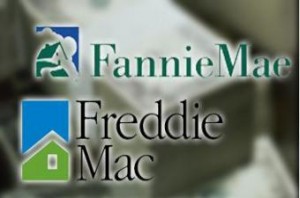 Fitch Ratings affirmed that while Fannie Mae and Freddie Mac maintained a "Stable Rating Outlook" in April due to direct financial support from the U.S. government, the ratings company said it expected the controversial FHFA's conservatorship of the two Enterprises would continue indefinitely.
Fitch Ratings affirmed that while Fannie Mae and Freddie Mac maintained a "Stable Rating Outlook" in April due to direct financial support from the U.S. government, the ratings company said it expected the controversial FHFA's conservatorship of the two Enterprises would continue indefinitely.
"Despite significant legislative efforts over reform of the housing market during the past year, the government-sponsored enterprises (GSEs) remain in conservatorship without a clear exit path," Fitch said in its report. "The Federal Housing Finance Agency (FHFA) has signaled that it will not interfere with Congress with respect to housing market reform."
The GSEs have been under FHFA conservatorship since September 2008, at which time they needed a combined bailout of $187.5 billion from taxpayers in order to stay afloat.
A recent stress test administered by the FHFA determined that the two GSEs would need another taxpayer bailout, this time of up to $157 billion, when certain hypothetical adverse economic conditions were applied.
The Fitch report examined the likelihood of the GSEs having to take another draw on Treasury, which is been an oft-discussed topic among housing market analysts in the last few months. Fannie Mae and Freddie Mac returned to profitability in 2012, but those profits declined substantially from 2013 to 2014. Recent reports, including one from the FHFA Inspector General, have warned that the conservatorship will likely continue, but the profitability of Fannie Mae and Freddie Mac might not.
Since 2012, all GSE profits have been swept into Treasury. The GSEs each have a capital buffer of $1.8 billion, but it is required to be reduced by $600 million per year until it reaches zero by 2018. The Enterprises would require another draw on Treasury should their losses exceed their capital buffer.
"Fitch believes the likelihood of additional draws from the U.S. Treasury will increase over time as the GSEs’ own capital reserve buffers are reduced to zero by 2018, particularly if economic conditions worsen materially or interest rates change rapidly," Fitch wrote in the report.

 theMReport.com Your trusted source for mortgage banking news
theMReport.com Your trusted source for mortgage banking news








